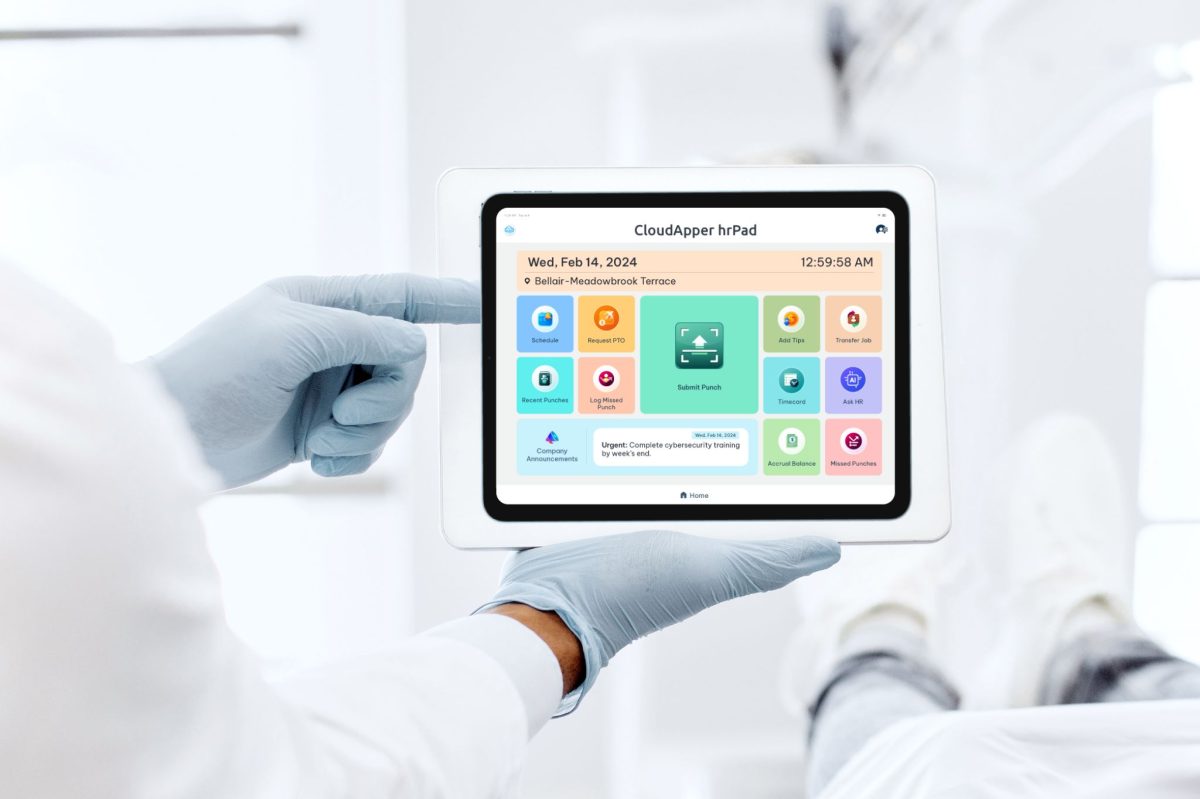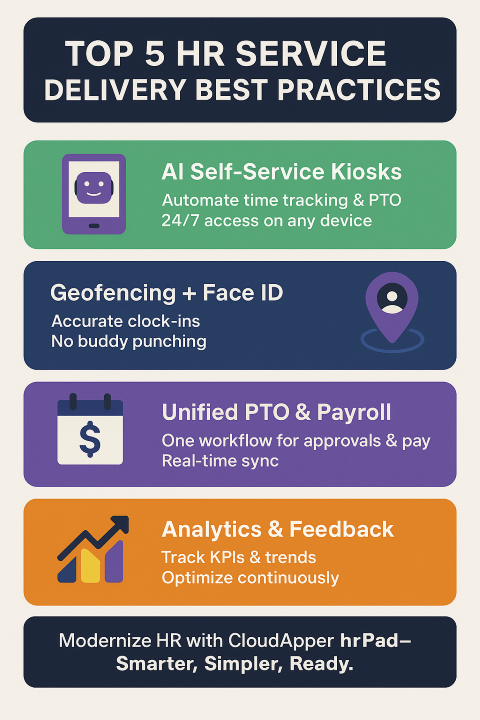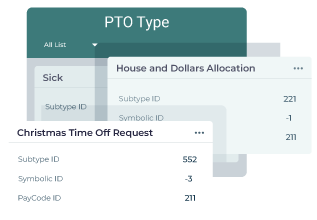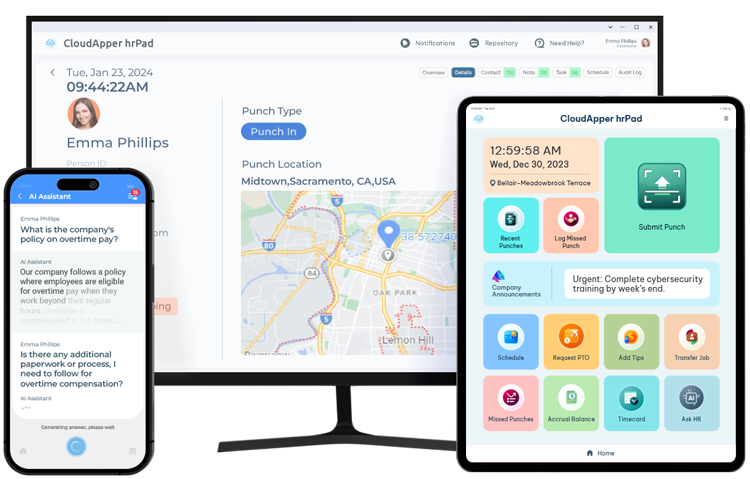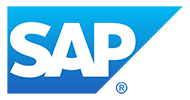Modern HR demands more than automation—it demands smarter service. Discover how CloudApper hrPad and AI-powered kiosks help streamline HR tasks, enhance employee experience, and reduce administrative burdens with best practices for HR service delivery in 2025.
Table of Contents
HR departments are under growing pressure to deliver services that are faster, more accurate, and more personalized—without expanding budgets or teams. In today’s workplace, employees expect on-demand support, mobile accessibility, and transparency in every interaction with HR. Meanwhile, frontline and deskless workers often face the most friction in accessing basic HR functions like time tracking, leave requests, and schedule changes.
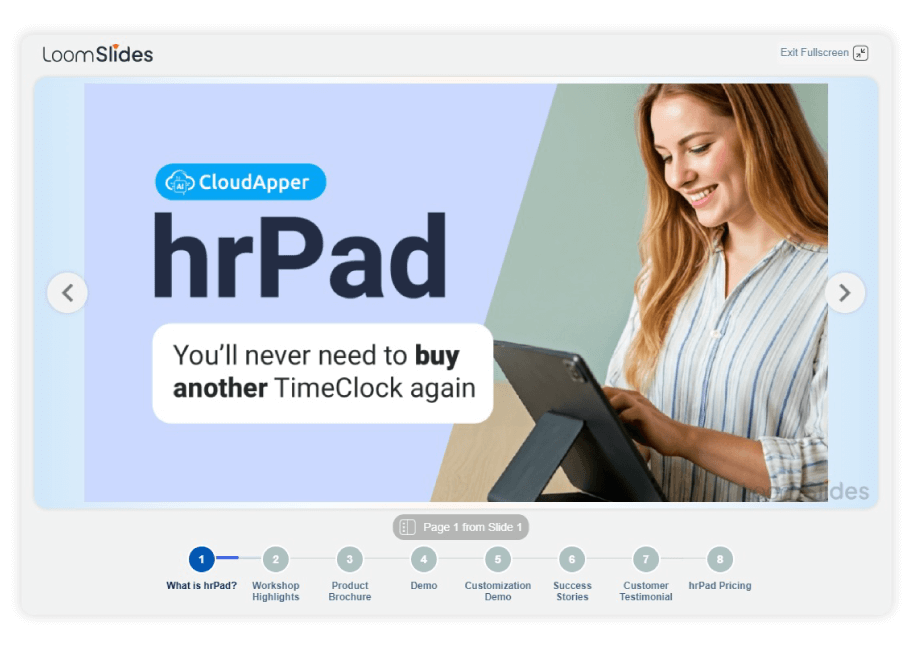
For more information on CloudApper hrPad visit our page here.
In 2025, effective HR service delivery is no longer about improving old systems—it’s about replacing them with smarter, more accessible alternatives. That’s where AI-powered employee self-service solutions come in. By automating repetitive tasks and placing tools directly in employees’ hands, organizations can significantly reduce administrative overhead while improving the employee experience.
This article outlines practical, proven best practices that HR leaders can implement this year to modernize their service delivery, support their workforce, and streamline operations.
1. Adopt an AI‑Powered Employee Self‑Service Kiosk
Shift routine HR interactions—timekeeping, PTO requests, FAQs—onto a user-friendly AI kiosk. This empowers employees to serve themselves, eliminates bottlenecks, and minimizes errors. According to industry experts, enabling on-demand self-service significantly improves speed and employee satisfaction.
Why it matters:
- Frees HR from repetitive tasks, allowing strategic focus.
- Ensures employees access what they need, when they need it—even off-hours.
- Aligns HR with modern digital expectations.
How to implement:
Use tablets (iOS/Android) with face‑ID and AI assistant support—like CloudApper hrPad—to automate check-ins, shift swaps, PTO requests, and answer policy FAQs instantly and transparently.
2. Automate Timekeeping with Geofencing & Face‑ID
Accurate time data is essential for fair payroll and compliance. Best practices include: automated check-in/out using Face-ID to prevent “buddy punching,” and geofencing to ensure location-based tracking. These controls build trust and accountability among deskless and frontline teams.
Best practice:
- Enforce geofence where clock-ins are valid—ideal for remote or field workers.
- Use Face ID for secure, seamless identity verification at clock-in points.
3. Integrate PTO, Overtime & Payroll in a Unified Workflow
Stop manual PTO tracking and fragmented systems. To streamline operations, implement an integrated PTO, overtime, and payroll engine:
- Automatically calculate overtime per employee policy.
- Route PTO requests through HR review—tracked in the same system.
- Sync data in real-time with core HR systems to eliminate manual payroll entries.
This approach is supported by research showing AI-backed tech reduces administrative load and improves productivity.
4. Leverage Data & Analytics for Continuous Improvement
Without measurement, you can’t improve. Establish KPIs like ticket resolution time, kiosk usage rates, request accuracy, and employee satisfaction. CloudApper hrPad supports built-in analytics—monitor real-time dashboards and survey trends to identify friction, optimize workflows, and adjust resources.
Evidence: HR tools offering analytics foster data-driven decision-making and higher service quality .
5. Personalize the Experience with Tailored AI Prompts
Make HR personal again. Design clock-in/out prompts that can check on employee wellbeing, collect pulse surveys, or gauge satisfaction. This builds empathy and gives HR actionable micro-feedback.
Why it works:
- Personalized moments improve employee engagement and culture
- Timely check-ins prevent fatigue and improve retention.
- AI can adapt to each employee—personalizing questions, tone, and cadence.
6. Integrate Seamlessly with Core HR Systems
Silos kill efficiency. A best practice is bi-directional real-time sync with major HR platforms—like UKG, ADP, Workday, SAP, or Oracle—for accurate employee records, scheduling, timekeeping, and payroll.
This ensures that front-line time data flows instantly to payroll without re‑entry or delays, reducing errors and supporting audited compliance.
7. Provide 24/7 AI-Based HR Assistance
Employees at all hours deserve access. Configure an AI assistant that reflects company policy for instant answers—addressing PTO balances, benefits questions, leave approvals, even employee referrals.
Industry findings: AI chatbots significantly cut HR workload and raise service levels.
Why CloudApper hrPad Leads the Way
- AI-driven kiosk on any tablet: iOS or Android device transforms into a robust HR terminal.
- Advanced identity controls: Choose from Face-ID, QR, barcode, or NFC.
- Comprehensive time & attendance engine: Geofencing, overtime logic, PTO, and accrual tracking.
- 24/7 AI assistant: Tailored to your HR policy, accessible anytime.
- Pulse surveys & feedback: Built-in check-ins and satisfaction surveys.
- Real-time integration: Seamless sync with leading HCM platforms.
- Cost-effective: Up to 75% less expensive than legacy systems.
Implementation Roadmap
| Step | Action |
| 1. Identify pain points | Audit current manual tasks or delays |
| 2. Pilot kiosk program | Deploy hrPad tablets in a department |
| 3. Customize AI & prompts | Configure overtime rules, PTO flows, ID method |
| 4. Train employees | Run quick training and gather feedback |
| 5. Track KPIs | Monitor request handling time, usage, satisfaction |
| 6. Scale rollout | Expand to full frontline and hybrid teams |
| 7. Iterate and optimize | Refine based on analytics and employee feedback |
Conclusion
To excel in HR service delivery in 2025 requires more than tools—it requires reimagining how HR supports employees. By leveraging AI-powered self-service kiosks, automated time tracking, personalized check-ins, analytics, and seamless integration, organizations can reduce administrative drag, enhance employee experience, and build a forward-looking HR strategy. CloudApper hrPad delivers on all these fronts, helping you implement best-in-class HR service delivery effortlessly. Contact us.
What is CloudApper AI Platform?
CloudApper AI is an advanced platform that enables organizations to integrate AI into their existing enterprise systems effortlessly, without the need for technical expertise, costly development, or upgrading the underlying infrastructure. By transforming legacy systems into AI-capable solutions, CloudApper allows companies to harness the power of Generative AI quickly and efficiently. This approach has been successfully implemented with leading systems like UKG, Workday, Oracle, Paradox, Amazon AWS Bedrock and can be applied across various industries, helping businesses enhance productivity, automate processes, and gain deeper insights without the usual complexities. With CloudApper AI, you can start experiencing the transformative benefits of AI today. Learn More
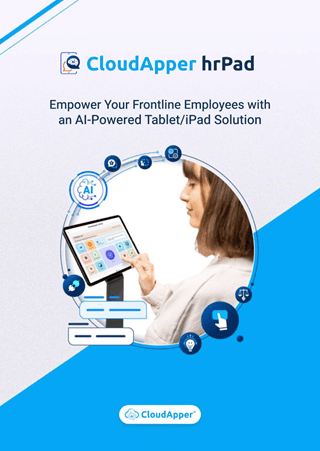
Brochure
CloudApper hrPad
Empower Frontline Employees with an AI-Powered Tablet/iPad Solution
Download Brochure
CloudApper AI Solutions for HR
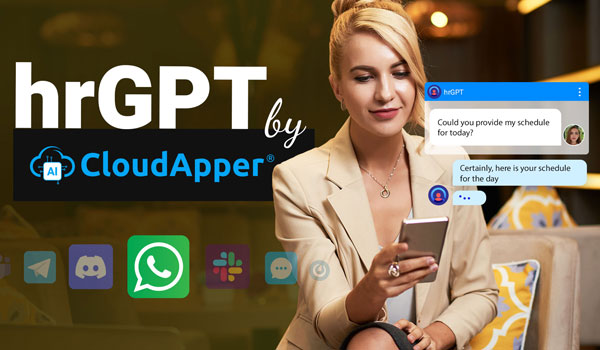
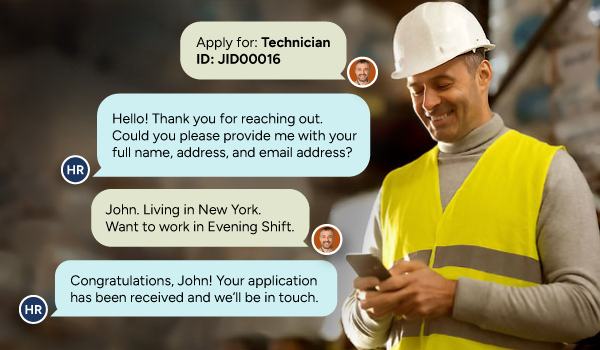
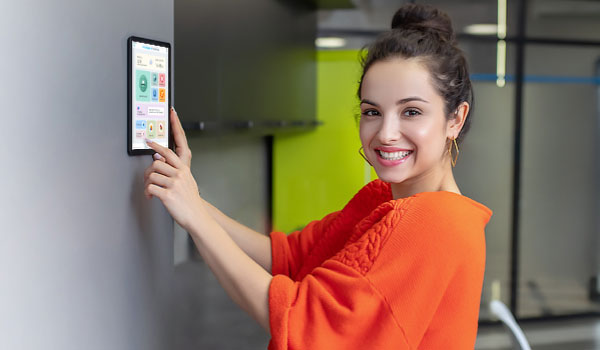
- Works with
- and more.
Similar Posts
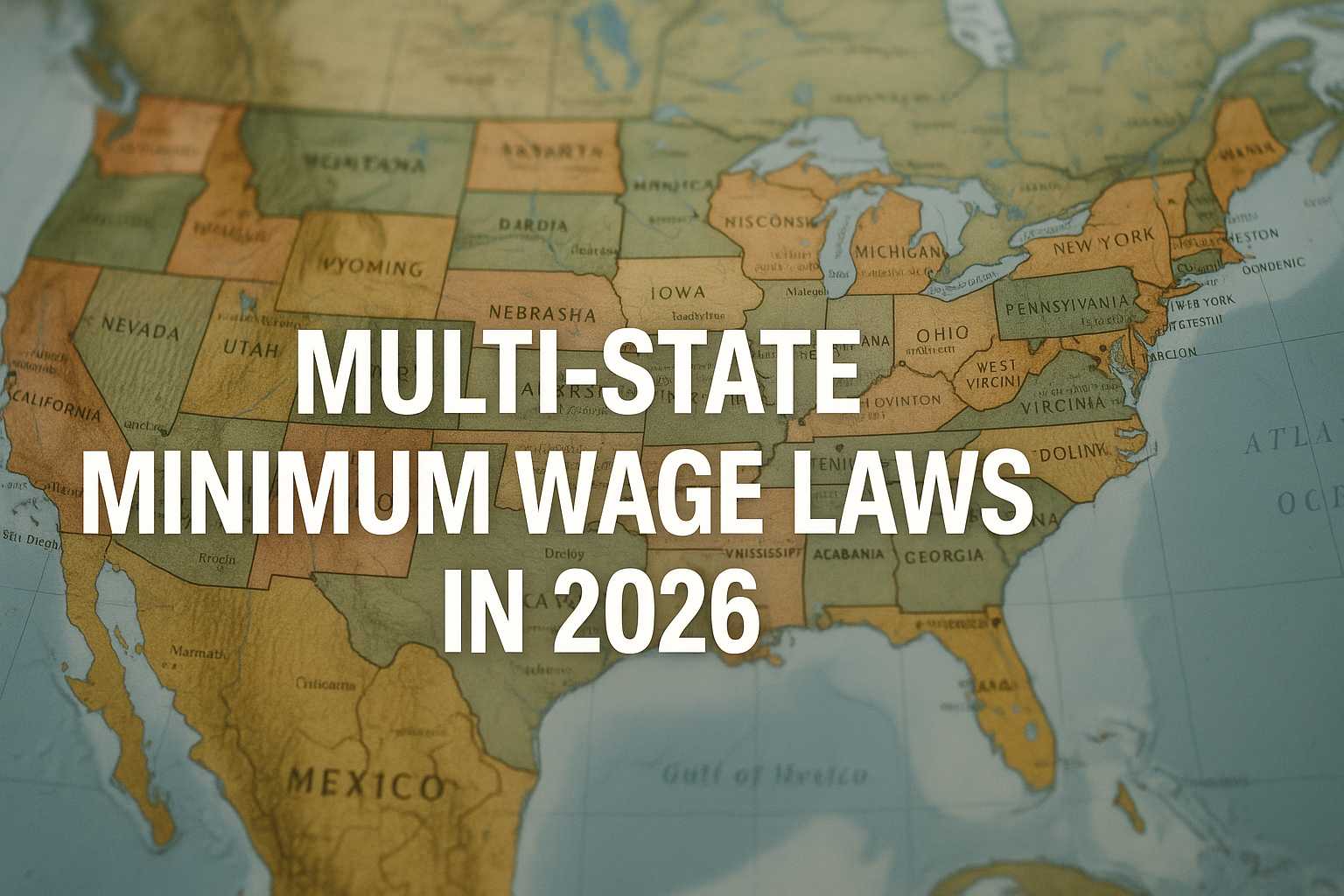
Managing Complex Multi-State Minimum Wage Laws in 2026 with CloudApper…
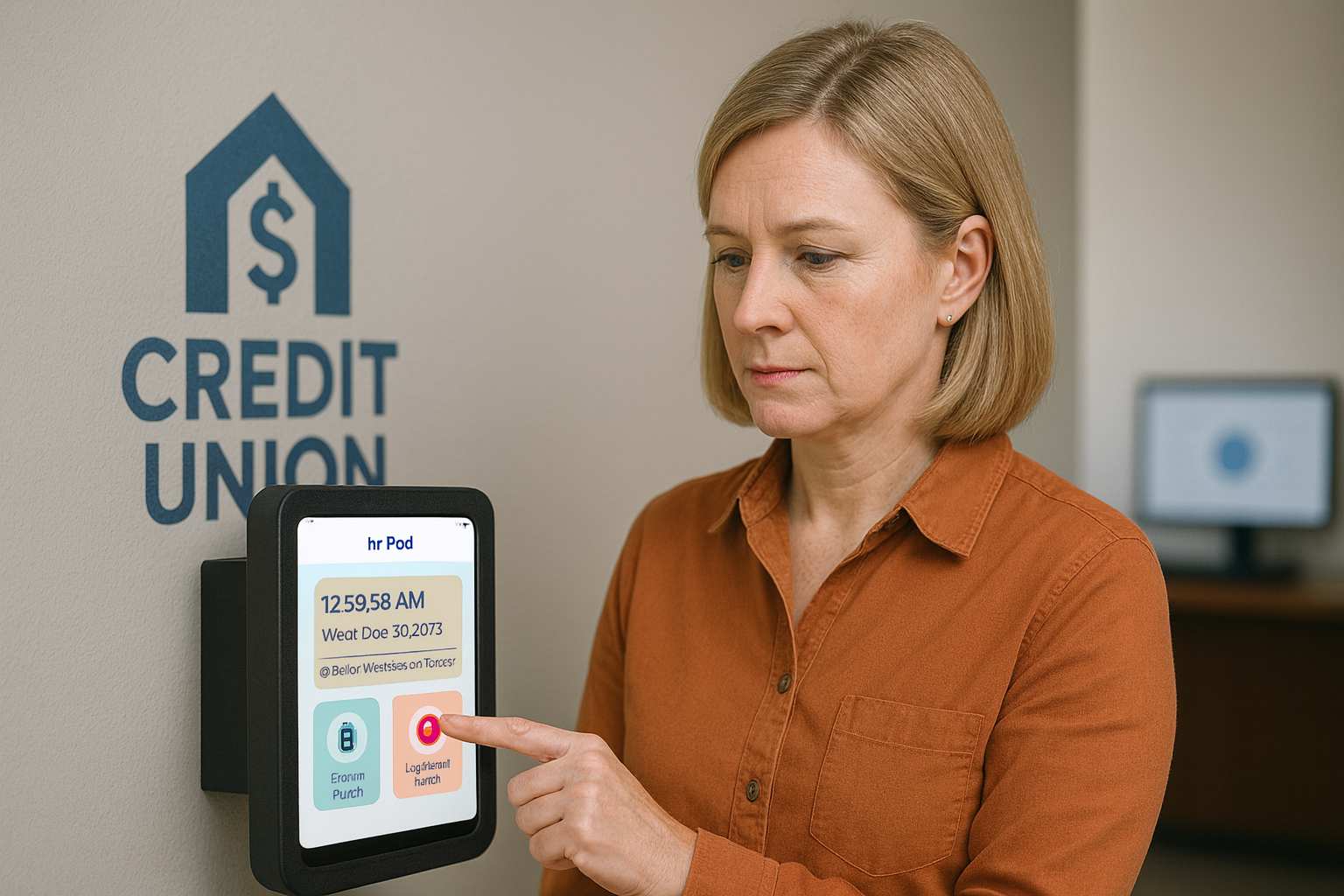
How One Credit Union Solved HR Fragmentation During a Major…

